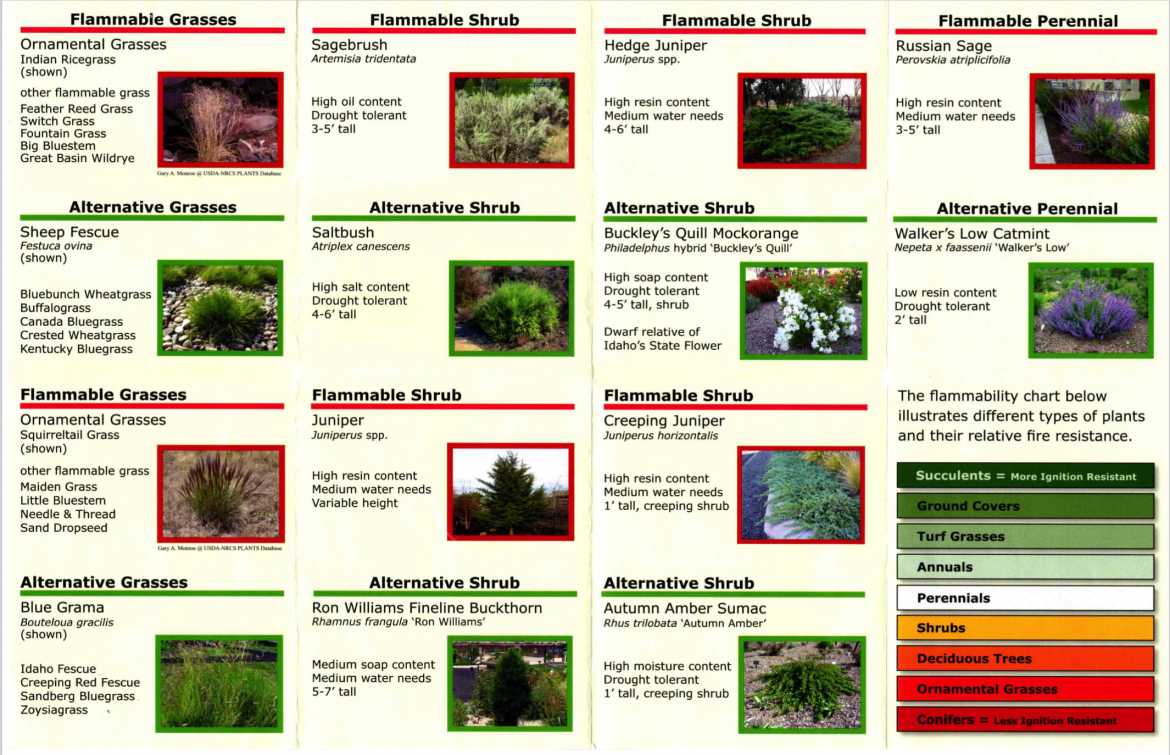Welcome to the fire-wise page!
Welcome to the fire-wise page!
Thank you for visiting the Quail Ridge Firewise page. Please take the time to read through the Firewise suggestions. This information will help Quail Ridge become a safer, more beautiful, and unique neighborhood.
By committing to more Firewise choices now and in the near future we will slowly bring much-needed change to our neighborhood. Please consider Firewise plantings and landscaping as a new alternative to previous landscaping practices. This will help the terrain of our neighborhood become more adaptive to fire danger.
Here you’ll find important insight into the City of Boise rules and regulations as well as additional Firewise suggestions and requirements of the CC&R’s of our neighborhood.
Additional PDF documents can be found at the bottom of the page with Idaho and Ada County Firewise suggestions and Firewise landscaping, including plantings.
With the fall season here and leaves falling, please clean the leaves from around plantings and under your pines. Also, think about raking up the leaves on the curb that linger at the sewer drains.
One of the best resources available for more information on Firewise gardening is at the Botanical Garden located at 2355 N.Old Penitentiary Rd. Boise.
https://idahobotanicalgarden.org/gardens/our-gardens/firewise-garden/
Another helpful link about how to clean up underdeveloped land: https://www.adafireadapted.org/homeowner/citizen-fuel-reduction-policy/
If anyone is interested in learning more about Firewise landscaping, practices, or assisting the Firewise Committee, please contact me through the QRNA email.
Best Regards,
Firewise Committee,
QRNA Board
Click here to download the Firewise Volunteer Hourly Worksheet PDF
Please check out the link below to learn more about how the Firewise USA Program work. Apply on the official Firewise USA management portal to be an active member.
https://www.nfpa.org/Public-Education/Fire-causes-and-risks/Wildfire/Firewise-USA/Become-a-Firewise-USA-site
Please click on the link below to learn more about how the Firewise USA Program work. Apply on the official Firewise USA management portal to be an active member.
https://www.nfpa.org/Public-Education/Fire-causes-and-risks/Wildfire/Firewise-USA/Become-a-Firewise-USA-site
Neighbors,
Summer has arrived. The rains are about to stop and the temperatures are starting to rise. It’s time to renew our pledges to keep Quail Ridge safe from wildfires.
I’ve heard and seen a number of residents cutting the foothills below their properties. Thank you! It’s a proven fact that the risk of a fire encroaching on your property is greatly reduced when the grasses (Cheatgrass, especially) are cut down back as far as 20 or 30 feet behind your property. Please look at this photo, recognize what it looks like, and take a look out back. Do not cut it to the ground, but down to about 4” high.
As I traveled the neighborhood, I noticed that some are watering the foothills and feeding the fuel that someday will burn. Please don’t!
If you have any questions or would like a visit to chat about Firewise, fuels, and preventative measures, please email us 'attention Firewise'.
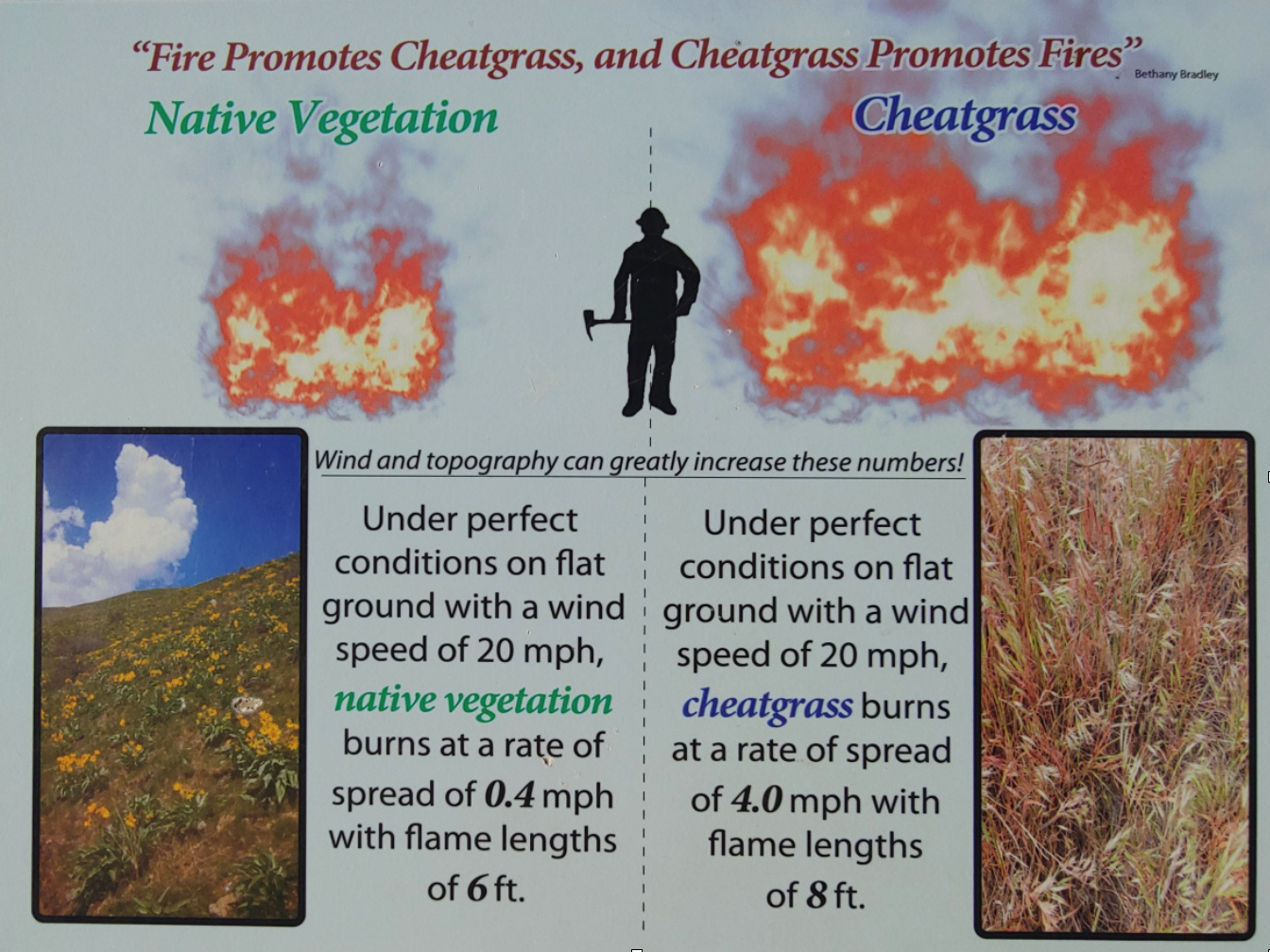
Firewise Your Home and Landscape
Plants
Every landscape has plants and every plant, if dry enough, will burn. Fire-resistive plants are those that have characteristics that make them less flammable than others. That being said, the selection of fire-resistive plant materials is usually far less important than how those plants and features are configured and how well the landscape is maintained. With a few exceptions, plant condition is more important than plant species. Depending on factors such as growth form, access to water, and nutrients, the same plant may be fire-resistive in one environment and combustible in another. Irrigation can make the difference between an extremely flammable plant and one that will not burn readily. Characteristics of fire-prone plants, which should NOT be planted within 30 feet of structures:
Accumulate fine, twiggy, dry, or dead material
Are not drought tolerant
Have leaves and/or wood containing volatile waxes, fats, terpenes, or oils
Are typically aromatic (crushed leaves have strong odors)
Have gummy, resinous sap with a strong odor
Are usually blade-leaf or needle-leaf evergreens
May have loose or papery bark
Are plants that flame (not smolder) when preheated and ignited with a match
Characteristics of fire-resistive plants that CAN be planted/maintained near structures
Have high moisture content in stems and leaves
Are drought-tolerant
Have little or no seasonal accumulation of dead vegetation
Have a low volume of total vegetation
Have non-resinous woody material
Have an open, loose branching habit
Are slow-growing
Boise Fire Department is an Idaho Firewise partner and endorses the information below:
Preparing for Wildfires
https://disastersafety.org/wildfire/
Landscape Design
http://idahofirewise.org/firewise-landscapes/firewise-landscape-design/
Plant Materials
http://idahofirewise.org/firewise-landscapes/firewise-plant-materials/
https://idahobotanicalgarden.org/gardens/our-gardens/firewise-garden/
Maintenance, maintenance, maintenance...
http://idahofirewise.org/firewise-landscapes/landscape-maintenance
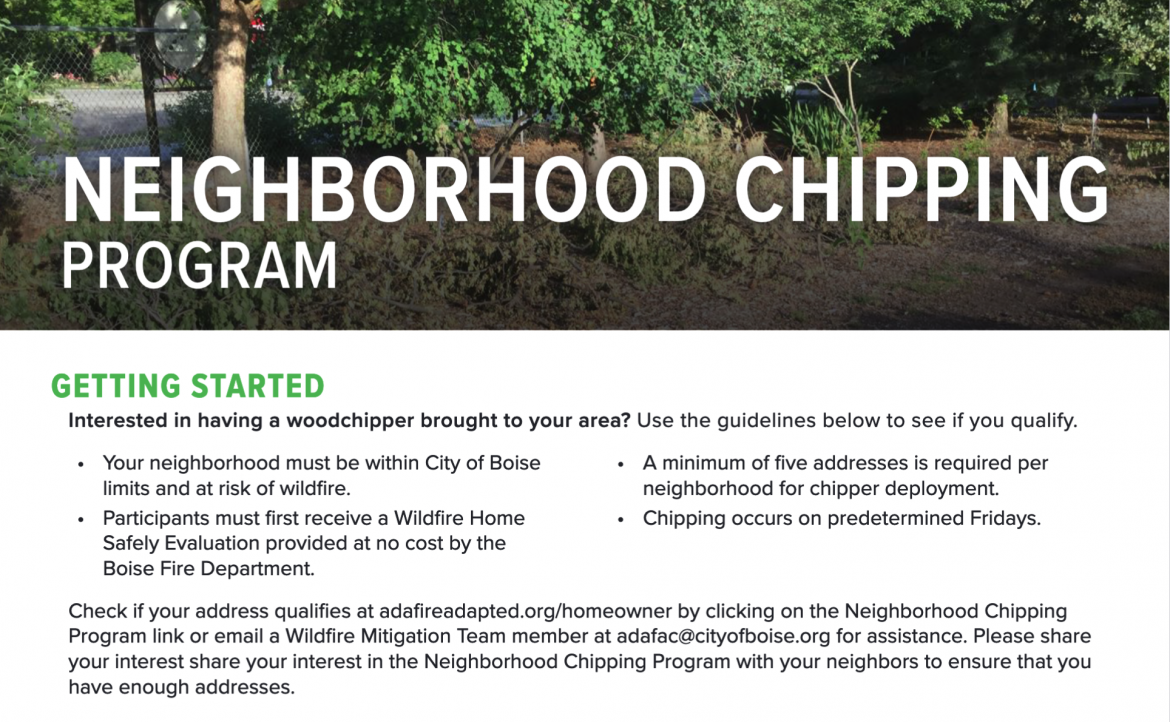
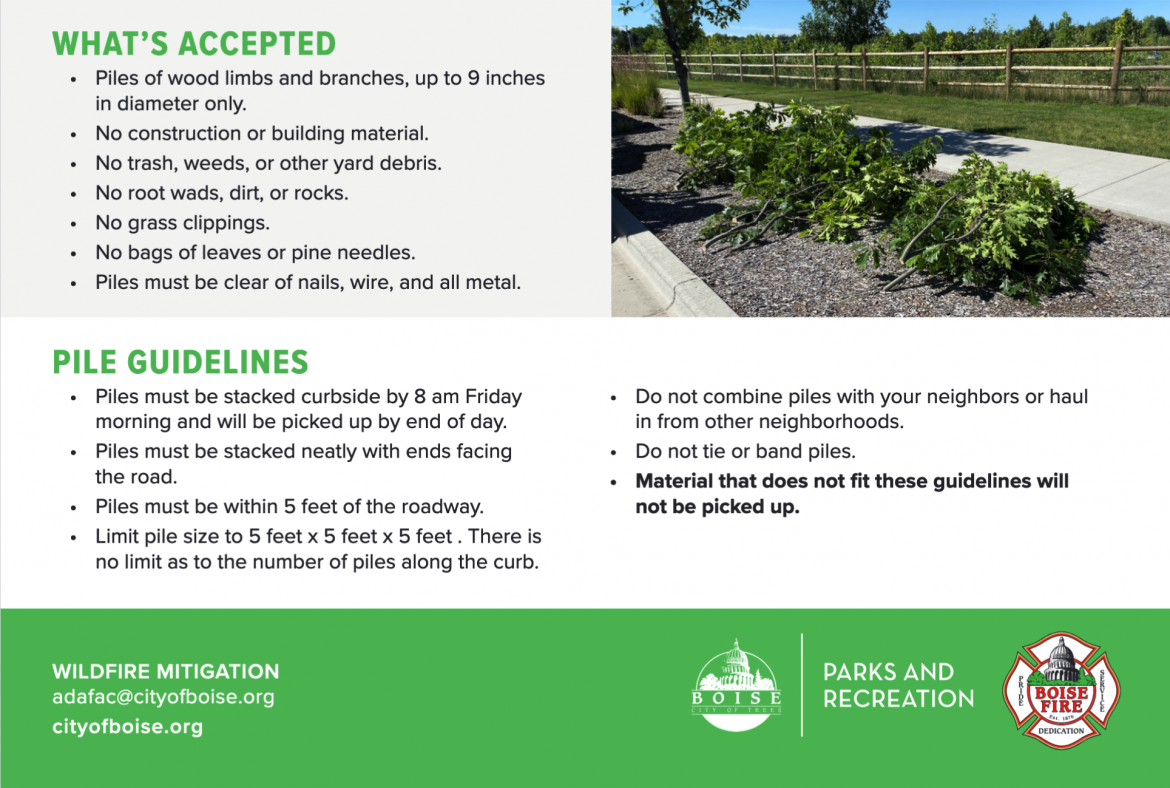
Fuel Reduction Policy
Guidelines for trimming and seeding grasses on lands adjacent to your home
Boise manages over 4200 acres of open space reserves, and much of this land is directly adjacent to residential neighborhoods and businesses. When a fire occurs within open space reserves, it presents a risk to those living and working nearby. The City of Boise actively manages its open space reserves to reduce wildfire hazards in partnership with the community. Every year, the City mitigates fire hazards through projects which include mowing, grazing, herbicide application, and sagebrush thinning. The City has also taken great strides in educating citizens and groups like homeowners associations (HOAs) and neighborhood associations (NAs) on how they can take part in preparing and mitigating wildfire hazards that threaten them in their respective neighborhoods. In an effort to help neighborhoods and residents take part in mitigation efforts, the City of Boise allows the cutting of grasses on land adjacent to Boise Open Space Reserves within 20 feet of any residential land parcel. Within this 20-foot zone, residents also have the opportunity to seed with native grasses in the fall using approved seed types. Only the following activities are allowable:
Weed trimming of grass understory, with plastic blades or plastic.
String, on reserve property within 20 feet of the property line, if the property is directly adjacent to a Boise Open Space Reserves.
Seeding of native grasses (approved native grasses will be determined by the Foothills Restoration Specialist and guidance from the NRCS web soil survey).
The following guidelines must be met to perform the allowed activities:
Grasses shall not be cut less than 4" in height on flat terrain and 6" in height on sloped terrain, in order to maintain the integrity and stability of the soil in treated areas.
Cut or trimmed organic materials must be bagged and removed from the site to reduce the spread of non-native invasive grasses, and to reduce wildfire risk. Due to the highly invasive nature of Rush Skeletonweed, pulling and bagging this weed prior to trimming grasses is strongly encouraged.
Prohibitions and Restrictions:
The use of metal blades, chains, and similar metallic implements is specifically prohibited.
Internal combustion engines may not be used for wildfire mitigation activities between July 1 and September 30 of each year.
During the period when the use of internal combustion engines is allowed, all internal combustion engines used for fire mitigation activities must have a spark arrestor.
The removal of shrubs, brush, and trees are prohibited unless specifically approved on a case-by-case basis.
Denuding the ground (removal of grasses down to bare earth) is prohibited.
Herbicide applications are prohibited.
Use of fire is prohibited. The planting of non-native vegetation is prohibited.
IT IS EXTREMELY IMPORTANT THAT YOUR MITIGATION WORK DOES NOT START A FIRE – The following best practices are strongly advised!
Have a fire extinguisher on hand, as well as a garden hose and a working cellphone in case a fire is started.
Do not lay hot equipment in dry grass where it may ignite flammable grasses.
Refuel tools away from any vegetation, on paved surfaces. Store gasoline away from the work area.
Avoid running equipment when hikers or wildlife are present.
Discontinue work until they are clear from the area.
Inform neighbors that you will be completing this mitigation activity.
For questions, please email the QRNA with Firewise in the Subject line. I’m aware that many of you are not able to do this yourself, but most lawn companies will. J.B. Landscaping (208-703-9536). Jose does quite a bit of work here on the hill and has agreed to give discounts to us to cut down our extended back yards.
Plant Materials
Plant materials are the living vegetation in your landscape, both native and introduced. The term "low-ignition plant materials" indicate plants that are less flammable than others.
In the figure below you will see different types of plants and where they rank on a more to less fire-resistant spectrum.
All plants will burn if conditions are right.
Plant condition is more important than species. Depending on growth form and access to water and nutrients, the same species may be slow to ignite in one environment and highly combustible in another.
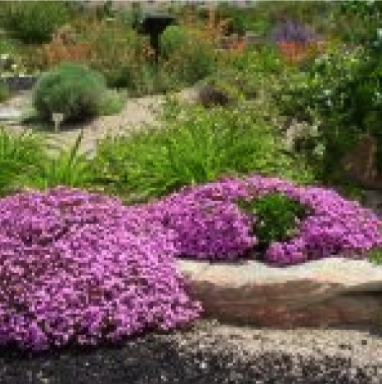
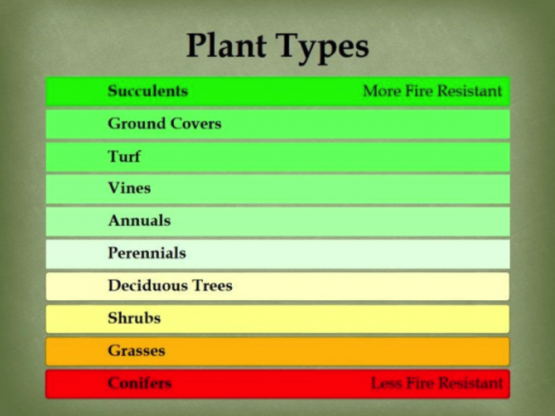
More fire-resistant plants share the same characteristics:
Have higher moisture content in their leaves
Have a little seasonal buildup of dead vegetation
Have low, compact growth form
Are high in soap or salt content
Have green stems
Are drought tolerant
Less fire-resistant plants typically share one or more of the following characteristics:
Are water-stressed
Accumulate fine, twiggy, dry, or dead material
Are evergreen
Alternative Plantings
